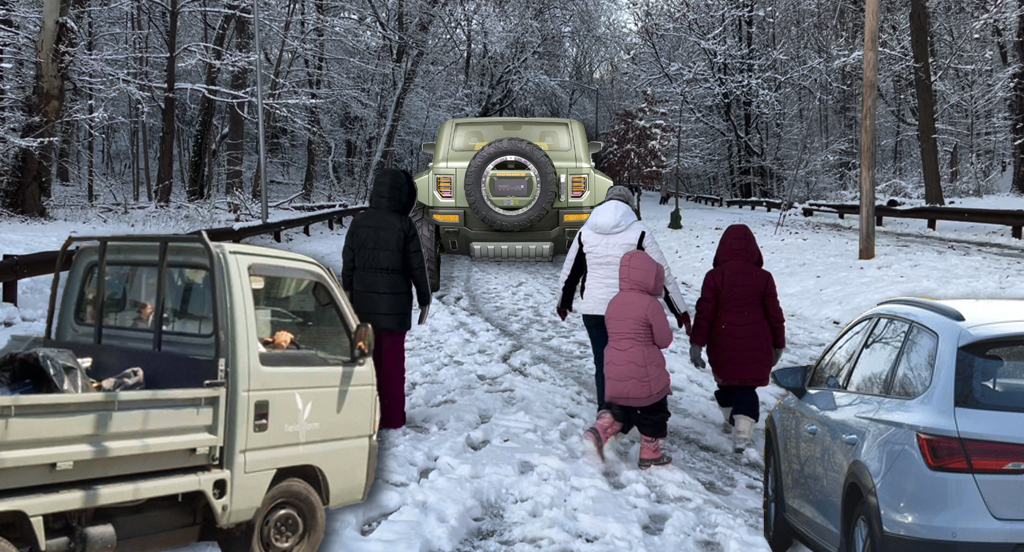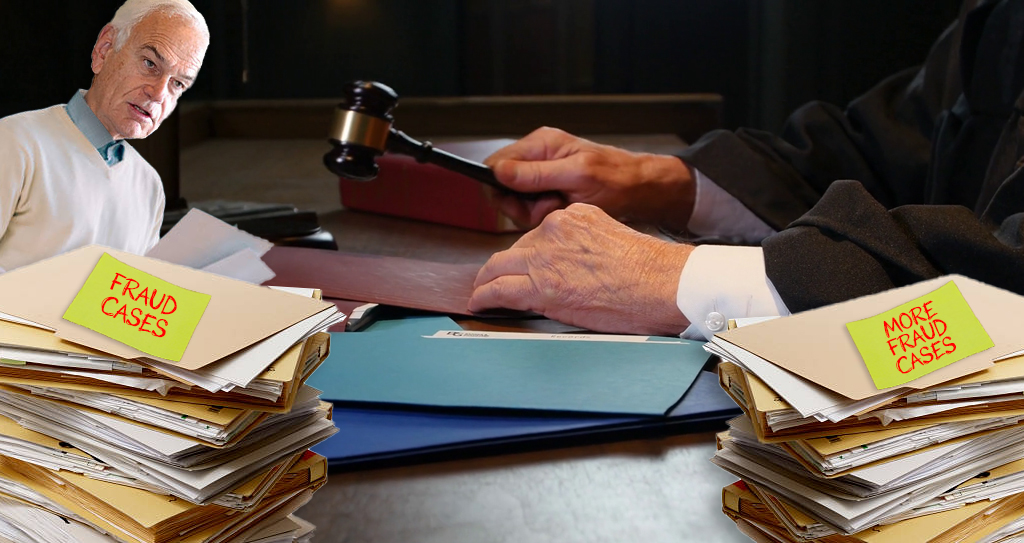
In a decision that may hinder future prosecutions of killer drivers, New York's highest court rejected the murder conviction of a car thief who fatally struck a Brooklyn pedestrian during a high-speed NYPD chase -- ruling that the defendant showed concern for others' safety by swerving around vehicles and people as he attempted to elude police.
The ruling drew a rebuke from Nassau County District Attorney Kathleen Rice, who is nationally known for seeking serious penalties for motorists who kill.
On the afternoon of April 27, 2009, Jose Maldonado drove a stolen minivan through the streets of Greenpoint. With police in pursuit, in apparent violation of NYPD protocol, Maldonado ran red lights and sped against oncoming traffic while weaving between lanes. When he narrowly missed a pedestrian who leapt from his path, Maldonado kept going. He hit 37-year-old Violetta Krzyzak at Manhattan Avenue and India Street. According to the Court of Appeals, Krzyzak "landed over 165 feet, or almost one block, away from the point of collision.” She died at the scene.
Maldonado did not slow down after striking Krzyzak. He crashed into parked vehicles five blocks away, court documents say, and was tackled by witnesses as he tried to flee on foot.
Maldonado was convicted at trial of murder because he acted with "depraved indifference" to human life, but the Court of Appeals this month reduced the top charge against him to second degree manslaughter [PDF]. “[W]e conclude that the evidence was legally insufficient to support defendant's conviction for depraved indifference murder,” wrote Judge Jenny Rivera for the majority, “because the circumstances of this high-speed vehicular police chase do not fit within the narrow category of cases wherein the facts evince a defendant's utter disregard for human life.”
Whereas Maldonado's murder conviction carried a sentence of 15 years to life, second degree manslaughter is a class C felony, with sentences ranging from one to 15 years in prison. Maldonado's re-sentencing date was not yet scheduled at this writing.
“The Court of Appeals’ decision in Maldonado is distressing to anyone who recognizes that a wildly reckless driver, bent on fleeing the police, can be absolutely depraved toward innocent people that are in his way," said Rice in a written statement. "It’s time for the legislature to address the issue and make it clear that the outrageously dangerous driving represented in Maldonado is not simply reckless, it is depraved. And when someone dies as a result, it should be nothing short of murder."
Rice and her chief vehicular crimes prosecutor Maureen McCormick have for years warned that poorly-written state statutes are leading to case law that favors killer motorists. But weak laws aren't the only cause for concern. Though the Maldonado ruling was not unanimous, five of the seven most powerful judges in New York State exhibited a troubling readiness to make excuses for a driver who they acknowledge "did not brake" after slamming a speeding van into an innocent bystander.
From the ruling:
In explaining his driving, defendant said he tried to avoid hitting cars and pedestrians, and that he did not know the neighborhood well and drove down the one-way streets by mistake. Defendant said he was lost when he ended up on Manhattan Avenue, and that he was avoiding cars as he evaded the police. According to defendant, he was going against traffic and looking in his rearview mirror for the police immediately before he struck the victim. When he looked forward again, defendant said he saw the victim and that he thought he "hit the girl in the hand or something." When he saw more people and traffic two blocks later, defendant decided to crash into the parked car to avoid hurting anyone else. He also expressed remorse for his actions.
In another confounding passage, the majority -- Rivera, Susan P. Read, Robert S. Smith, Sheila Abdus-Salaam, and Chief Judge Jonathan Lippman -- concluded that Maldonado was looking out for others because he did not intentionally hit more pedestrians and cars. “Eyewitness testimony established that he repeatedly tried to avoid collisions while evading capture by the police,” the judges wrote. “Although defendant swerved around cars and across lanes of traffic, he did so both to speed his flight and to avoid crashing into other vehicles or pedestrians.”
An exasperated Judge Eugene F. Pigott authored the dissenting opinion. “Once again, a person is dead because a defendant, concerned about being arrested for theft, led police on a high-speed chase through residential neighborhoods,” he wrote. “And, once again, the majority treats this crime with unfathomable and unjustified leniency.”
We asked McCormick for her thoughts on the Maldonado ruling, and what it means for future prosecutions. Below is her response in full, edited for style.
In People v. Maldonado the Court of Appeals has essentially restated the position it took in the 2011 case of People v. Prindle: A defendant fleeing the police due to underlying criminal activity, driving in a continuously and grossly reckless manner, and creating a grave risk of death, is not “depravedly indifferent.” Vehicular crimes prosecutors hoped the Court would take the Maldonado case as an opportunity to scale back the Prindle decision. In Maldonado the Court’s decision focused on the defendant’s statements that he was lost (and therefore did not intend to drive down one-way streets the wrong way), that he tried to avoid collisions and that he expressed remorse. The majority reasoned the defendant’s motive was to flee and not to put other people in imminent danger of death. There is a rational argument the defendant did both simultaneously. The argument was rejected by the majority but was adopted by the dissent.
In the recent case of People v. Heidgen, et.al. the Court recognized that the issue of depravity, and the defendant’s state of mind, was “fact-specific” and a question for the jury. In Heidgen, the Court also reiterated that a conviction must be upheld when, “viewing the facts in a light most favorable to the People, there is a valid line of reasoning and permissible inferences from which a rational jury could have found the elements of the crime proved beyond a reasonable doubt” (citing People v Danielson, 9 NY3d 342, 349[2007]). And yet in Maldonado the Court found there was no “valid line of reasoning” for the jury’s depraved indifference murder conviction in spite of the following facts taken from the decision:
“Police pursued defendant Jose Maldonado through the streets of Greenpoint, Brooklyn, a mixed commercial-residential neighborhood, soon after he stole a minivan from outside its owner's residence. This five-minute, midday chase led to defendant's fatal collision with a pedestrian… It is undisputed that defendant consistently drove well above the 30 miles per hour speed limit and violated numerous traffic rules as he attempted to evade capture by the police. The chase began when defendant ran a red light, accelerated through intersections, and went the wrong way down two one-way streets. The police followed with lights and sirens activated as defendant drove towards Manhattan Avenue, a major thoroughfare and commercial hub. Defendant turned onto the avenue where, according to witnesses, there was heavy vehicular and pedestrian traffic. As he drove north, defendant swerved into the southbound lane to pass slower vehicles and avoid congestion, and then shifted back into the northbound lane. Witnesses estimated that he was driving 40 to 50 miles per hour. A few blocks up Manhattan Avenue, defendant ran a second red light and narrowly avoided hitting a pedestrian in a crosswalk. According to witnesses, defendant did not brake or slow down. Instead, he accelerated north and again swerved across the double-yellow lines into the southbound lane to avoid slower moving vehicles. A driver going south testified that defendant did not slow down when he entered the opposing lane of traffic. As a consequence, the driver had to swerve to the side of the road to avoid a collision. Once clear of congestion, defendant swerved back into the northbound lane. A block later, defendant ran a third red light and struck a woman in a crosswalk. The victim hit the passenger side of the minivan's windshield with such force that her body landed more than 100 feet down the avenue. She died at the scene. At that point, the police stopped following defendant to render aid to the victim. Defendant continued accelerating north on Manhattan Avenue, again swerving into the southbound lane. A driver headed south testified that defendant sped towards him at a rate of about 50 to 70 miles per hour. As a result, he had to swerve into the northbound lane to avoid a head-on collision with defendant. After the driver swerved, defendant's escape routes were apparently blocked by cars in both the north and southbound lanes. The chase ended a few blocks from where defendant struck the pedestrian, when defendant crashed the minivan into a parked car to avoid hitting other vehicles. The impact pushed the parked car over the cars parked behind it. Defendant, still trying to escape capture, ran out of the minivan and down a nearby street, …”
The Court of Appeals acknowledged these facts and still determined there was no “evidence evincing a defendant's utter disregard for human life” and therefore “there could [can] be no basis for a jury's finding of guilt on a depraved indifference murder charge. Without such evidence, a jury cannot reasonably conclude that the defendant did not care whether someone lived or died and as a consequence was depravedly indifferent.”
In effect, the Court found that no jury could reasonably reject the defendant’s statements as completely self-serving; that no jury could conclude, instead, that the defendant’s all-consuming interest in escaping superseded everything else; that a jury could not weigh the defendant’s actions of passing red lights, wrong way travel, oncoming travel, continued acceleration through crowded streets at mid-day -- even after nearly missing the first pedestrian -- against his statements and decide the facts of the case. One has to ask why the Court would deprive the jury of that decision as a matter of law.
The court referred to the defendant’s driving as “careless and unsafe.” I would argue this is a gross understatement regarding the defendant’s actions and the risks it created. Conversely, the court overstated a potential negative effect of upholding the conviction by stating: “If we accepted the People's argument, depraved indifference murder could arguably be charged in every case where a defendant killed someone during a high-speed police chase.” Prior to the Court’s decision in Prindle, fleeing the police added to a defendant’s depravity where the driving behavior was grossly and continuously reckless. If the driving had actually been merely “careless and unsafe,” depravity would not have been sustained even before the Prindle decision. In contrast, Maldonado’s driving could be arguably and rationally construed as indicating the defendant did not care whether anyone else lived or died, as long as he escaped.





